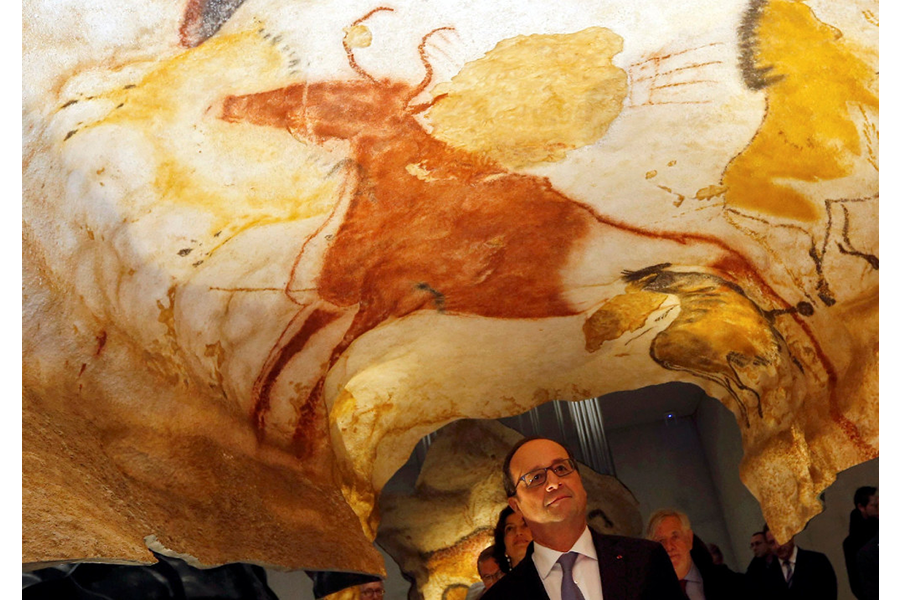France opens Lascaux replica cave. Is it better than the real thing?
Loading...
On Thursday, French officials will open a complete replica of one of the world’s most valuable ancient sites to the public for the first time ever.
Famous for its incredible ancient cave paintings, France’s Lascaux cave is an UNESCO world heritage site and attracted thousands of visitors each year before officials closed the cave to tourists in 1963. Other replicas have attempted to capture the majesty of the caves, but this week’s opening will be the first to completely replicate the original.
"This is more than a copy, it's a work of art!" said French president Francois Hollande as he visited the replica cave, known as Lascaux IV.
The original cave was first discovered by a group of teenagers in 1940 as they explored the foothills around their home village, Montignac, where the new replica cave is located.
"We were hoping to find a treasure. We found one, but not the one we thought we would,” said the only remaining teenage adventurer, Simon Coencas, who is now 89.
The cave that the teenage boys stumbled upon in their ramblings was filled with beautiful, ancient paintings, glimpses of a way of life far removed from the World War II France that the teenage boys knew.
Today, the cave is considered one of the most important archeological sites in the world. It contains more than 2,000 paintings of humans and animals from the Paleolithic era, between 18,000 and 20,000 years ago.
This one site gives archaeologists an idea of what and how ancient humans ate, where they lived, and what their society was like, making its preservation incredibly valuable for researchers.
Yet, French officials wanted to share Lascaux with the public as well, and in 1947 began work to make the cave accessible. Workmen installed doors, walkways, and even air conditioning for the cave’s visitors.
By the late 1950s, however, officials had discovered lichen growing on some of the cave’s rocks, prompting concerns that the breath from 1,800 daily visitors was taking a toll on the site. In 1963, the cave was closed to the public. Mold continues to be a problem within the original caves and since 2008 even access for scientists and preservationists is strictly limited.
In the subsequent decades, replicas including Lascaux II, a 90 percent complete reproduction of the cave, and Lascaux III, a traveling exhibition that has visited cities around the world, sought to bring the cave to those who could no longer see the original.
But officials wanted to do more, and better, too, hence Saturday’s unveiling of the cave’s most perfect replica yet, Lascaux IV.
Unlike the other replicas, Lascaux IV is a perfect facsimile of the original cave, right down to the atmosphere.
Recreating an entire, intricately painted cave is expensive, and cost approximately 66 million Euros. The exhibition will open this Thursday.








